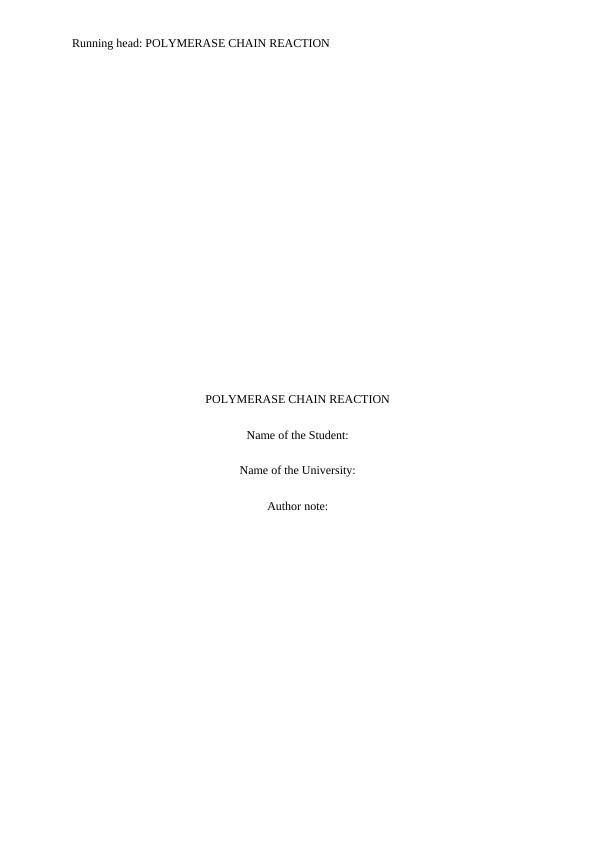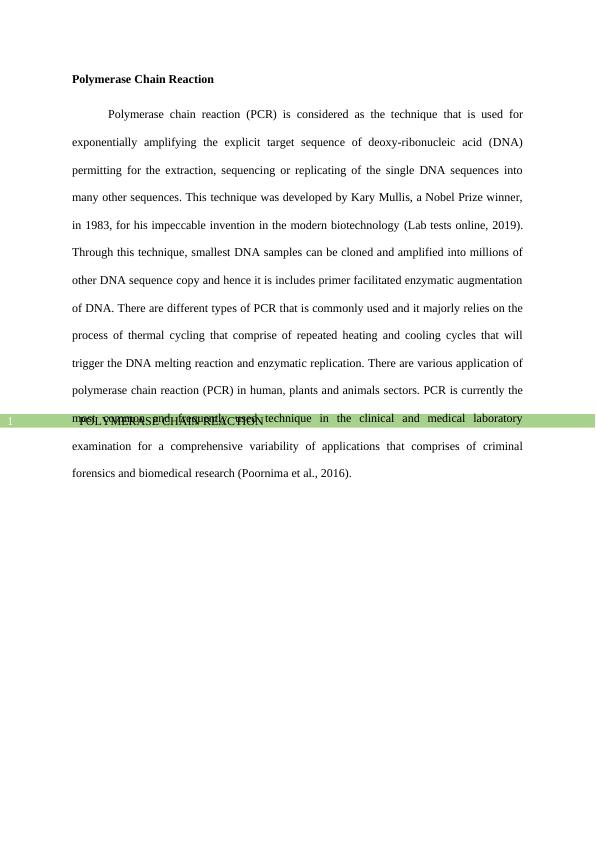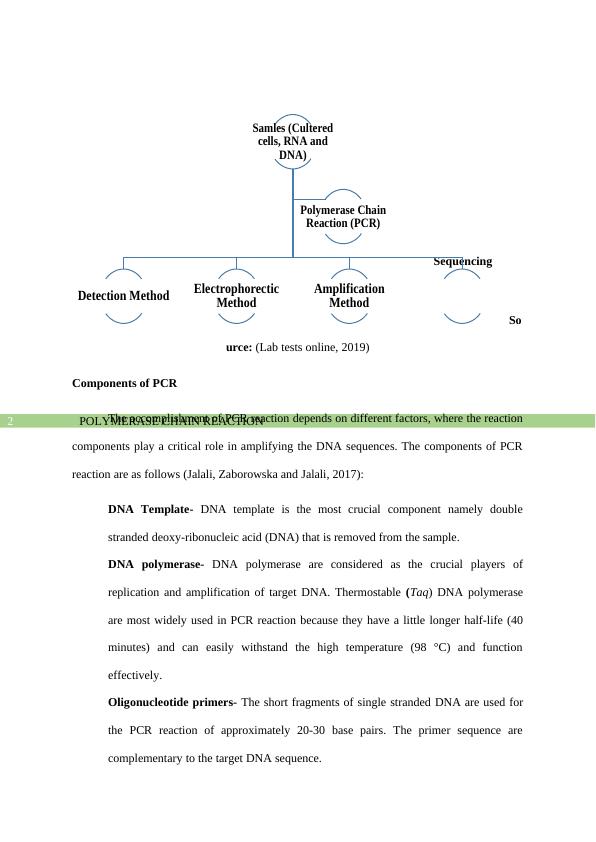Polymerase Chain Reaction
Added on 2022-12-27
8 Pages1594 Words51 Views
End of preview
Want to access all the pages? Upload your documents or become a member.
Polymerase Chain Reaction and HPLC 1 PCR and HPLC 2 1
|13
|2487
|78
Overview of the PCR and its Applications
|9
|2264
|273
Polymerase Chain Reaction (PCR) and Its Medical Applications
|7
|2003
|126
Technique Application and Theory of Polymerase Chain Reaction
|6
|2052
|72
Laboratory Report on Polymerase Chain Reaction (PCR) for Identifying Bacterial Colonies
|10
|2493
|86
Bacterial Forensics: PCR and Gel Electrophoresis Analysis
|7
|2229
|394


